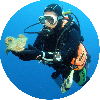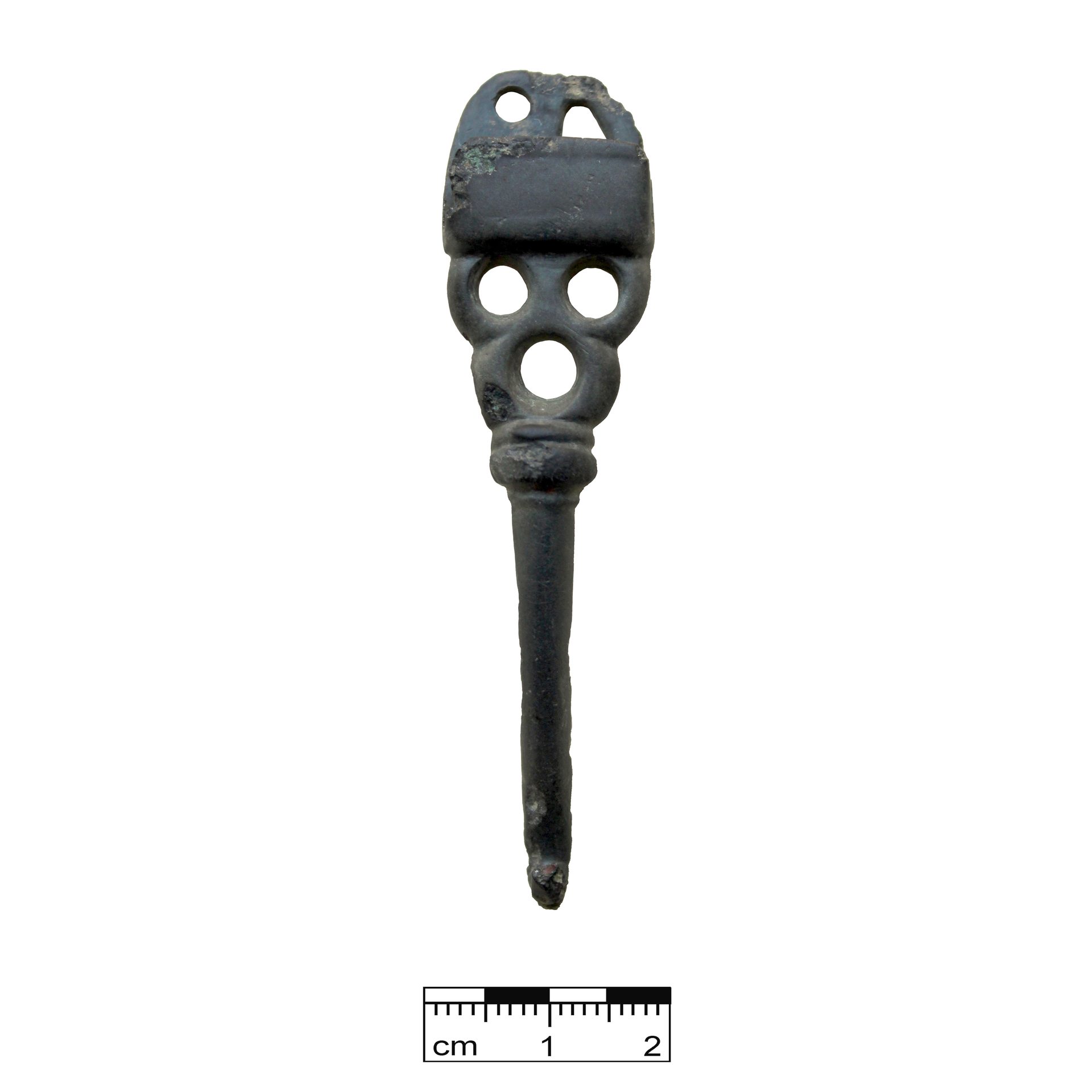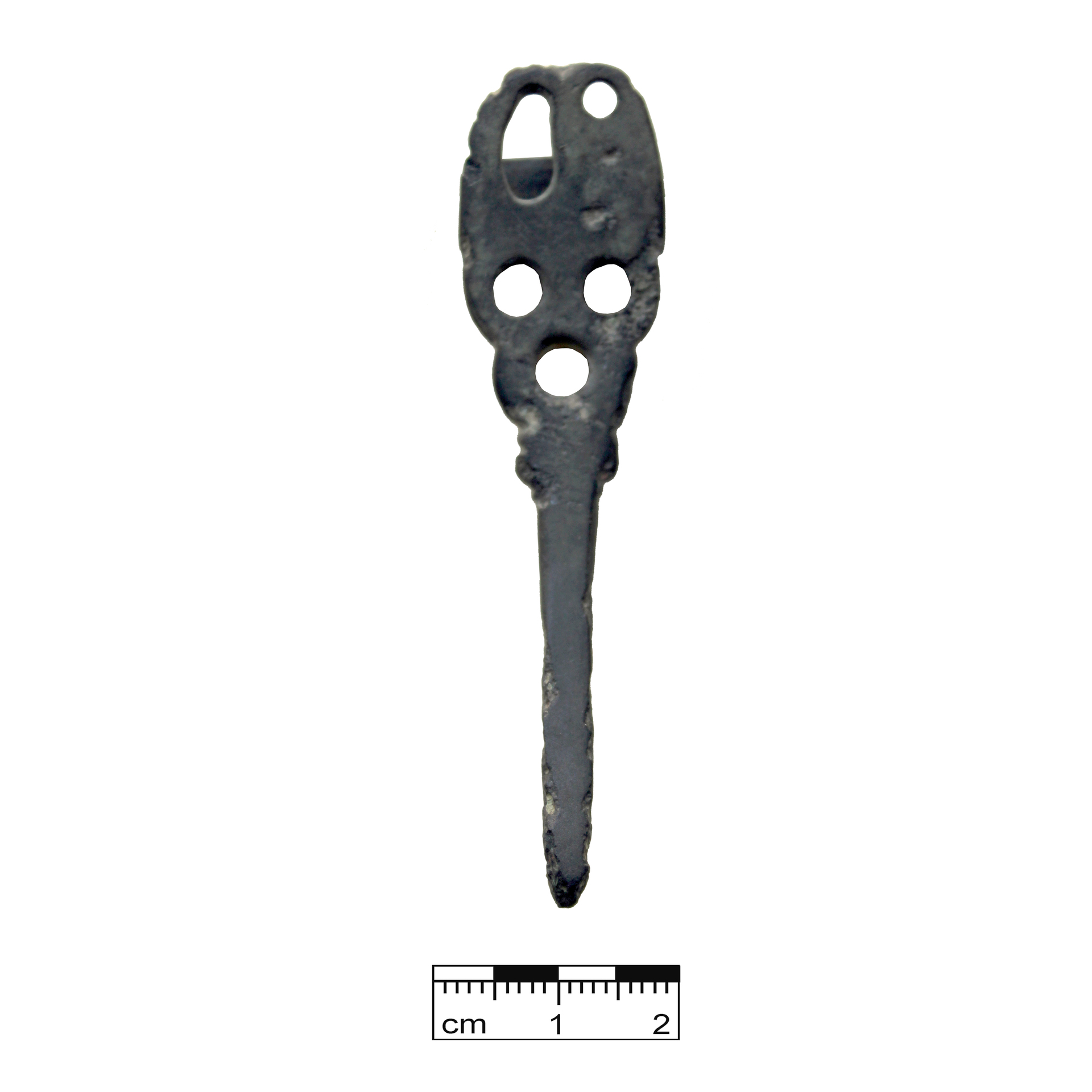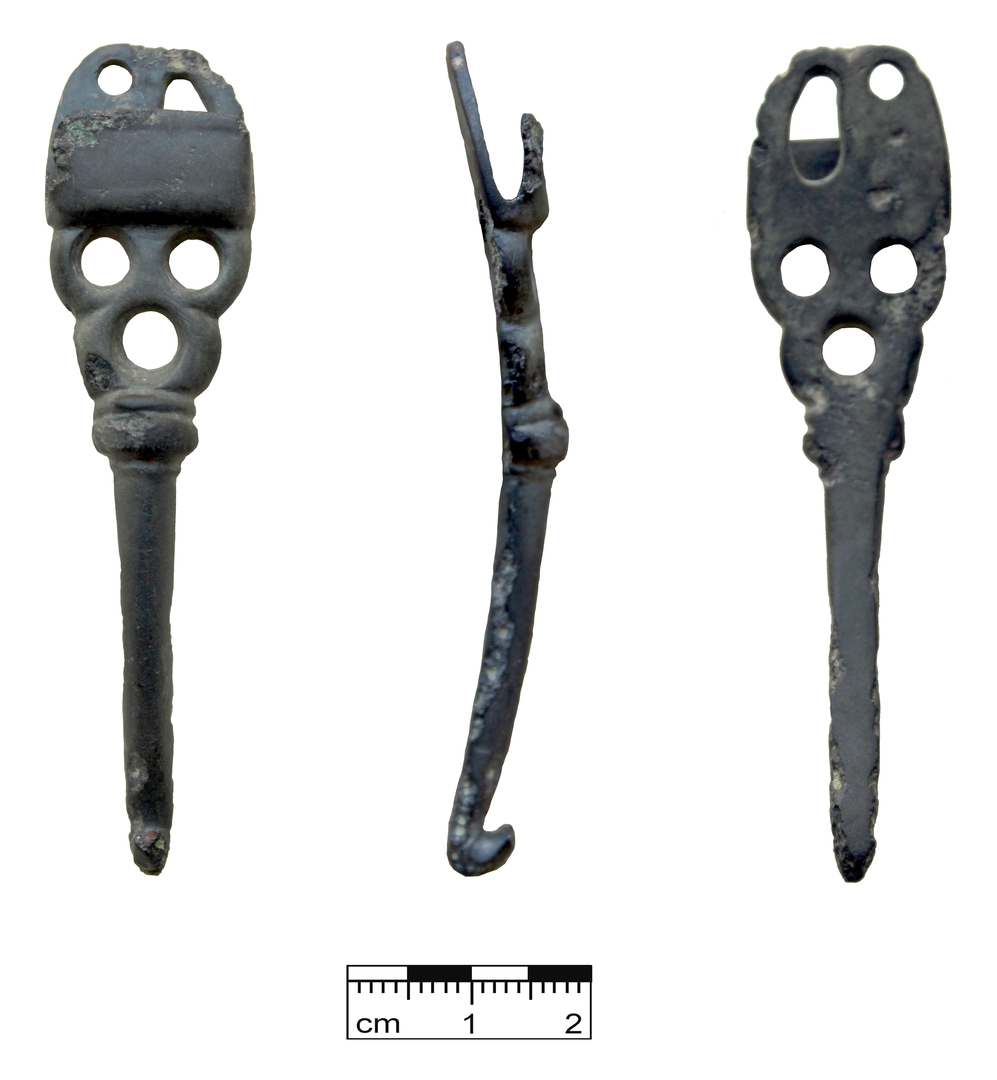Category:
Dating:
Description:
Profiled hole belt hook, Jössen variant. The slightly curved belt hook has a middle part that consists of a trefoil made up of two smaller and one larger rings that are fused together. A hook arm with a rounded, triangular cross-section leads off from the middle part - delimited by a bulge made up of three transverse ribs - and ends in a hook that is bent sharply outwards. The plate-shaped end has a rivet hole, a torn-out rivet hole and a plate-shaped belt cover. The remains of a line decoration made up of two transverse lines have been preserved on the belt cover. Early pre-Roman Iron Age.
Material:
Bronze
Weight:
10,4 g
Length:
68,1 mm
Condition:
Completely preserved
Detector find:
Yes
Country:
Germany
County:
Region Hannover
Front / Cleaned with water & brush
Rear / Cleaned with water & brush
Cleaned with water & brush
Social Media & E-mail
Copy and share link:
To write a comment, please log in.














Ute Bartelt 11.2.2024
Often only fragments of the middle part or the hook arm of these hole belt hooks are found. That's why here is a complete piece.
1
1 Reply
Jan 11.2.2024
A really great find! 👍
Markus Wehmer 11.2.2024
What a beautiful specimen!
1 Reply
Ute Bartelt 11.2.2024
That's it. I have rarely had such a well-preserved detector find on my table.
1
Markus Wehmer 13.2.2024
= "simplified hole belt hook type C" according to Voigt (1971) There is a completely identical example from the "Rauschenwasser" site near Göttingen (Voigt 1971, Fig. 13h) Theodor Voigt, Two groups of late La Tène belts. Annual Journal for Central German Prehistory 55, 1971, 221–270. For a summary of the "Jössen-Rauschenwasser group" of type C according to Voigt, see: Christoph Schlott, On the end of the late La Tène oppidum on the Dünsberg. (Municipality of Biebertal-Fellingshausen, Gießen district, Hesse). Research on the Dünsberg 2 (Montagnac 1999), 24–28.
Related finds
Bronze
29.2.2024 (VT-WK676I6U)
Aurich (DE)
Yesterday (VT-PY45X7N8)
Gifhorn (DE)
Nickel silver
Nonferrous metal
Nonferrous metal
Nonferrous metal
Bronze
Bronze
TB
24.1.2024 (VT-NNE66R59)
Northeim (DE)
Bronze


